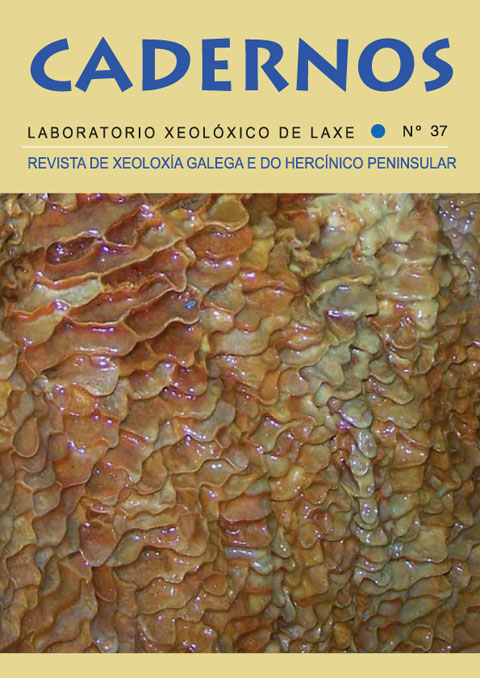Contribution to the study of Fe-Ti mineralization from S. Torpes beach (Sines, Setúbal, Portugal)
Main Article Content
Abstract
Three samples from the natural heavy concentration of the upper back sands at S.Torpes beach was analysed by microscopy, MEV and microprobe in order to characterize the mineralogical composition of the ore minerals. Because of the strong homogeneous granulometry the sand was only divided in two fractions, above and below the 125 micron sieve. Each fraction was subjected to magnetic separation by magnet hand and heavy liquid (bromoform). The paramagnetic fraction was subjected to Frantz electromagnet. Magnetic and paramagnetic fractions were studied in reflection microscopy, SEM and electronic microprobes. These techniques showed that the heavy fraction of these sands is composed on average by magnetite (71%), ilmenite (12%), hematite (8%) and mixed grains (9%). Textural aspects of the three main mineral compositions as well as its chemical composition and structural formula were further characterized. We also identified minor amounts of monazite and alteration minerals (rutile, psudorutile, ilmenorutile and titanite) and sulphides, all in very small amounts. It was possible to determine the mineralogical “average” composition of the sand combining the results of this study with the study of Pombo et al. (2006).
Keywords:
Downloads
Article Details
References
Canilho, M. H. (1989). Elementos de geoquímica das rochas do maciço ígneo de Sines. Lisboa. Ciências da Terra, nº 10, pp. 65-80.
Canilho, M. H. (1972). Estudo geológico-petrográfico do maciço eruptivo de Sines. Bol. Mus. Lab. Min. Geol. Fac. Ciências 12 (2), 77-161.
Cascalho, J., Taborda, R., Rodrigues, A., Oliveira, A., Pombo, J., Fradique, C., Balsinha, M. (2006). Os minerais pesados como indicadores dos processos sedimentares – alguns exemplos da plataforma continental portuguesa. VII Congresso Nacional de Geolo- gia. Livro de Resumos vol. I. João Mirão e Ausenda Balbino Eds. pp. 381-384.
Castro Leandro, G. (1947). Breve notícia sobre o jazigo de ferro-titânio da praia da S. Torpes (Sines). Estudos, notas e trabalhos vol. III (4), pp. 212-216.
Deer, W. A., Howie, R. A., Zussman, J. (2000). Minerais constituintes das rochas - uma introdução. Fundação Calouste Gulbenkian. ISBN: 9789723108460.
Droop, G.T.R. (1987). A general equation for estimating Fe3+ concentrations in ferromagnesian silicates and oxides from microprobe analyses, musing stoichiometric criteria. Mineralogical Magazine 51, 431-435.
Inverno, C. M. C., Manuppela, G., Zbyszewski, G., Pais, J., Ribeiro, M. L. (1993). Carta geológica de Portugal, escala 1/50.000. Notícia explicativa da folha 42-C, Santiago do Cacém. Serviços Geológicos de Portugal, Lisboa, 75p.
Pombo, J., Cascalho, J., Rodrigues, A., Taborda, R., Oliveira, A. (2006). The Sines sub-volcanic intrusive complex: imprint on the inner shelf sedimentary cover (Sines, Portugal). Brasil. Journal of Coastal Research, 39, pp. 250-254.


